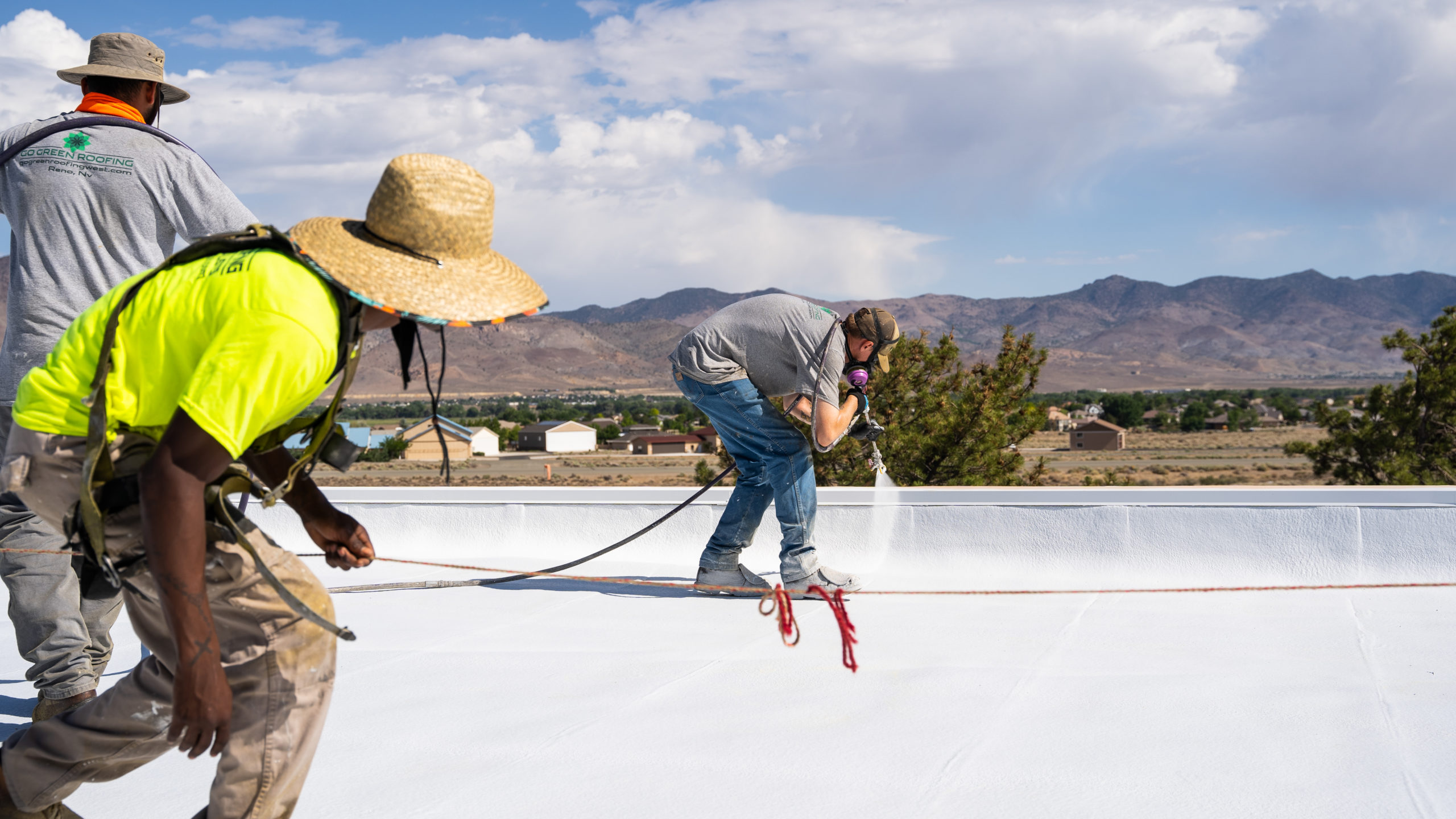
4 Silicone Roof Coating Myths Debunked
When it comes to picking the right products for your client’s roof coating projects, it’s important to know the facts about how they work. It is also important to properly inform your clients about different myths or misconceptions they might have heard about different coating products.
While some clients might have opinions as to what roof coating systems worked best for them in the past, each project is unique and clients shouldn’t be led by any misconceptions. Instead, they should learn about the technical needs of their project, the structure of their roof system, and how this affects what they need.
When you can let them know the facts about their project, you’ll help show them you’re the roofing contractor they can count on for both knowledge and results.
We’ll help you put some roofing misconceptions and biases to rest. Here are 4 of the most common silicone roof coating myths, debunked.
Myth 1: Silicone Roof Coatings Are Completely Waterproof
One of the most common myths about silicone roof coatings is the notion that they are completely waterproof. When people think of silicone, they tend to think that the product is completely water-resistant or even water repellent.
While it would be incredible to have a 100% waterproof roof coating; it’s not realistic. No such product exists.
While the best solution for roof ponding is to create a structure to redirect water to the right exit, silicone roof coatings can withstand some ponding (standing water). This may be where the “waterproof” rumor comes from.
However, your roof’s ability to withstand ponding is just a temporary solution for larger water drainage issues. While your roof will not fall apart as soon as ponding happens, it can be damaged, affecting the rest of your structural integrity through eventual leaks.
If you notice ponding happening in your roof systems, you need to act before further damage occurs. Make sure to contact an expert like Rugged Coatings, who can help advise you on a complete roof solution.
Myth 2: Silicone Roof Coatings Are Always Better Than Acrylic Roof Coatings
Like we mentioned before, there are plenty of roof coating products out there. You will often hear manufacturers and contractors touting that silicone coatings are better than acrylic ones, in every scenario.
This just isn’t true. Silicone and acrylic roof coatings are just chemically and physically different. They each excel in their own ways, depending on the application conditions, purpose, performance goals, and other factors.
It is common practice to apply silicone coatings to flat roofing systems. This is because there is a higher chance of ponding in these structures. Like we mentioned, silicone roof coatings are not necessarily 100% water resistant but can withstand heavy rain and ponding slightly better than acrylic coatings can.
Acrylic roof coatings, on the other hand, are great for roofs that are slightly slanted, or that don’t experience as much intense rainfall, because ponding is less likely to occur when the water rolls off into designated drainage areas.
Silicone roof coatings also differ from acrylic coatings in their application methods. Silicone coatings can actually be more difficult to apply and clean up than acrylic coatings, due to their chemical makeup.
Silicone and acrylic roof coatings are both incredibly long-lasting, durable, and useful for a variety of applications. One isn’t better than the other. At the end of the day, they’re just different.
Myth 3: Silicone Roof Coatings Are 100% Solids-Based
Though products like Rugged Coatings’ Si92 silicone roof coatings are high-solids, they’re not 100% solids-based.
Silicone roof coatings are generally mixed with different kinds of solvents; high-solids formulas are actually around 95% solids-based.
However, just because your silicone product is less than 100% solid by volume, doesn’t mean it works less effectively.
In fact, it is important that manufacturers add solvents to their materials to help with their performance.
Adding solvents helps roof coatings improve their adhesive properties. The solvents help chemically alter the solution to make it workable enough to stick to a variety of surfaces and ensure that it’s able to be sprayed out of a machine without clogging.
Myth 4: Silicone Coatings Can’t Be Repaired Easily
Silicone roof coatings’ chemistry and physical properties can make them difficult to work with when trying to apply other materials to them. This contributes to the myth that they’re not repairable, as different materials have a hard time sticking to silicone, such as tar coatings.
This occurs when the repair material and the silicone coating aren’t chemically compatible. However, it is possible to recoat/repair silicone roof coatings, especially when the repair material is more silicone.
Silicone roof coatings already have incredibly long service lives, usually extending longer than 20 years. However, in the rare event that repairs do need to be made, rest assured that they’ll be effective and long-lasting if they’re made correctly with an additional silicone coating.
Again, it’s always best to have expert advice when making roof repairs, to avoid expensive rework or even purchasing the wrong materials altogether. Contact industry veterans like Rugged Coatings who have the knowledge to advise repair and restoration methods.
Rugged Coatings’s Si92 Silicone Roof Coating
To learn more about our Si92 silicone coating, click here to view product information, or contact Rugged Coatings to speak with one of our experts today!


